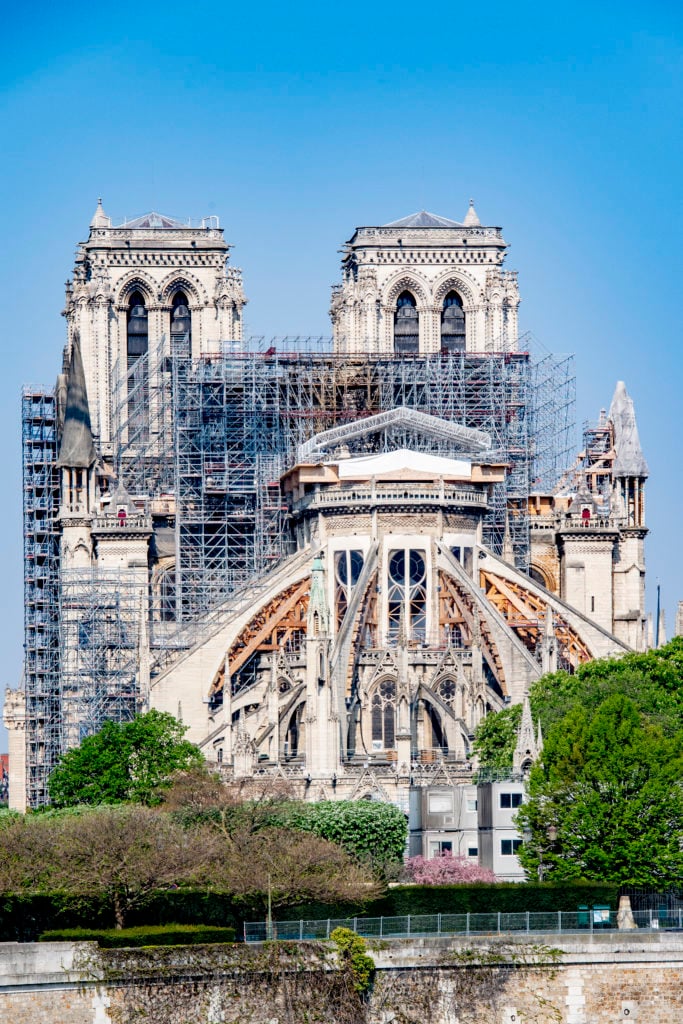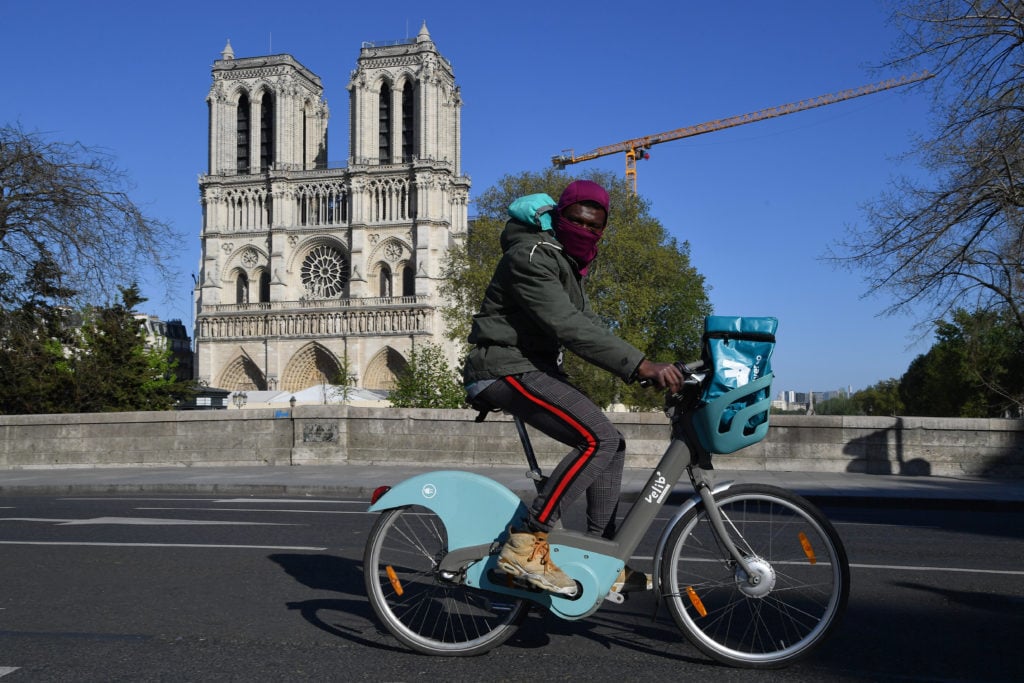Art World
One Year After the Tragic Notre Dame Fire, the Cause of the Devastating Blaze Remains Shrouded in Mystery
Investigators still don't have access to the area where the fire began.

Investigators still don't have access to the area where the fire began.

Sarah Cascone

One year ago today, the world watched in horror as a fire swept through Paris’s iconic Notre Dame Cathedral, sending its spire crumbling to the ground, caving in its ceiling, and setting alight its historic interior. And now, with the country on lockdown, restoration efforts on the Gothic building have been put on hold, forcing a team of 100 engineers, scientists, architects, and archeologists to cease their tireless work on the damaged structure.
The target date for completing the complex and delicate restoration has always been 2024, in time for Paris to host the Olympic Games. But experts have been skeptical of that timeline from the start. And since President Emmanuel Macron announced that ambitious target just two days after the fire, there have been considerable delays—over high winds and record heat that further endangered the weakened structure, investigating concerns that lead pollution unleashed by the collapse of the roof, and now the coronavirus shutdown.
“The aim is to reopen the cathedral in 2024 even though the work won’t all be done,” Stéphane Tissier, director of operations on the project, told TIME. “The objective will be that that the public will be able to reenter in 2024.” (Prior to the current lockdown, there was speculation that the cathedral’s forecourt would be opened to visitors as early as March.)
With work at a standstill, engineers are relying on laser monitoring systems to detect any structural movement that might trigger another collapse. Although firefighters were able to save the cathedral’s nave and twin bell towers, the intensity of the fire still puts the church’s structural integrity at risk.

Smoke billows as flames burn through the roof of the Notre Dame de Paris Cathedral on April 15, 2019, in the French capital Paris. Photo courtesy Fabien Barrau/AFP/Getty Images.
“All you’ve been hearing so far for the last few months is that this is still a very fragile situation,” Lindsay Cook, a professor of Medieval art and architectural history at New York’s Vassar College, told National Geographic. “And to just leave it there seems like it’s just asking for trouble over time.”
Further complicating matters are the remains of scaffolding erected six months before the disaster for a restoration project. Removing the scaffolding is expected to take four months of painstaking work, ensuring that falling pieces won’t further damage the building or injure workers. Only after is it removed can construction begin.
And although there was an international outpouring of €922 million (more than $1 billion) in promised donations in the immediate aftermath of the fire, much of that money has yet to materialize. Whether it will in the current worldwide economic climate is an open question.
The delay in work is also preventing investigators from definitively identifying the cause of the fire, reports Le Journal des Arts. Experts still haven’t been able to gain access to the area where the blaze is believed to have begin, and that area will not be accessible until the scaffolding comes down.
After a two-month investigation that included the testimony of 100 witnesses, the Paris public prosecutor’s office announced in June that the leading theory was that the sparks that ignited the fire must have come from either an electrical short circuit or an improperly extinguished cigarette.

A man wearing a protective mask rides his bicycle in front of Notre Dame Cathedral in Paris after repair work stops due to the global health crisis. Photo by Stephane Cardinale, courtesy of Corbis/Corbis/Getty Images.
But despite the long road ahead, there is reason for optimism.
“What matters isn’t the roof and vault so much as the sanctuary they protect. The heart of Notre Dame had been saved,” Aline Magnien, director of the Historical Monuments Research Laboratory, which is in charge of national monument conservation, told the magazine Science.
Another sign of hope came during Holy Week, when a group gathered at the cathedral to say mass for only the second time since the fire.
“A year ago, the cathedral was destroyed,” the celebrant, Paris Archbishop Michel Aupetit, told BFMTV. “Today the country is ravaged by a pandemic. There’s always a message of hope, and this celebration at the heart of the cathedral will be the sign of our hope.”